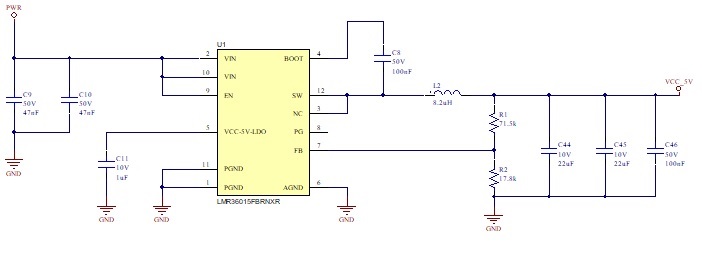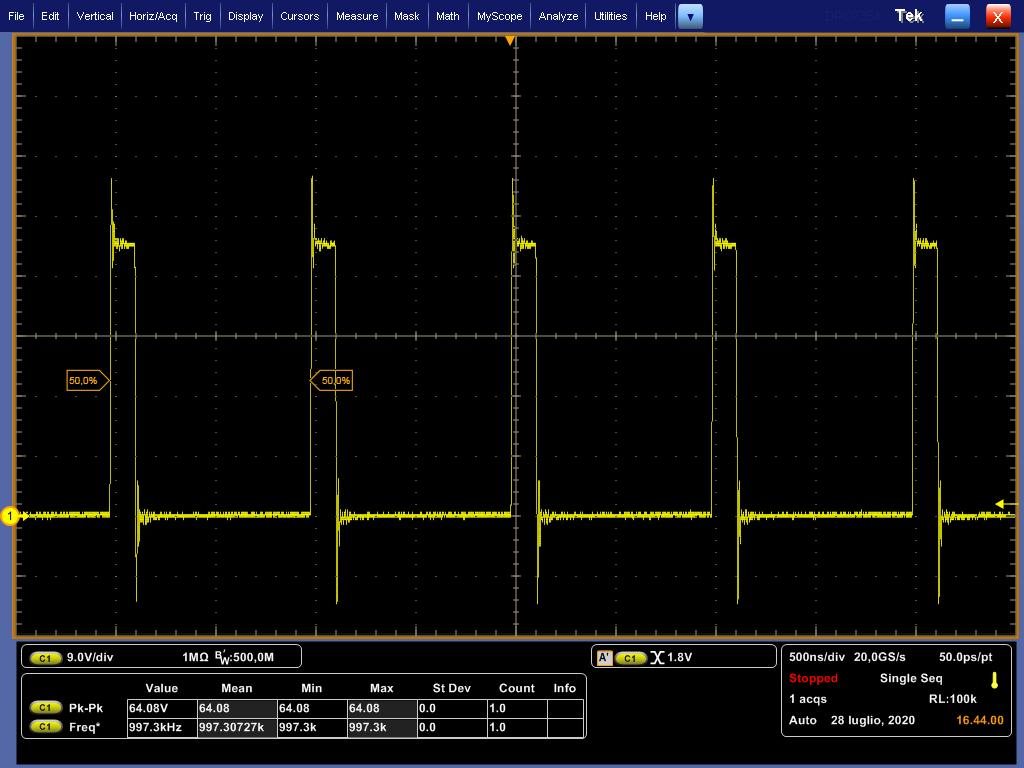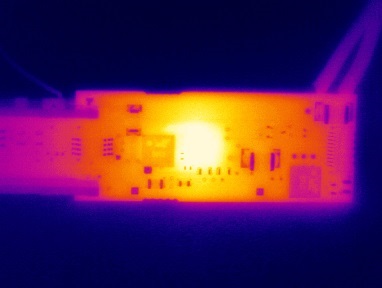Hello
I'm debugging a board with the power step-down LMR36015. Following the schematic that I used. I'm facing a strange high-temperature chip value even if without any load when I power the device with 40Vdc. the temperature rise up to 70 degrees. The output is stable. I also attach the signal on the inductor. What could be the reason?




